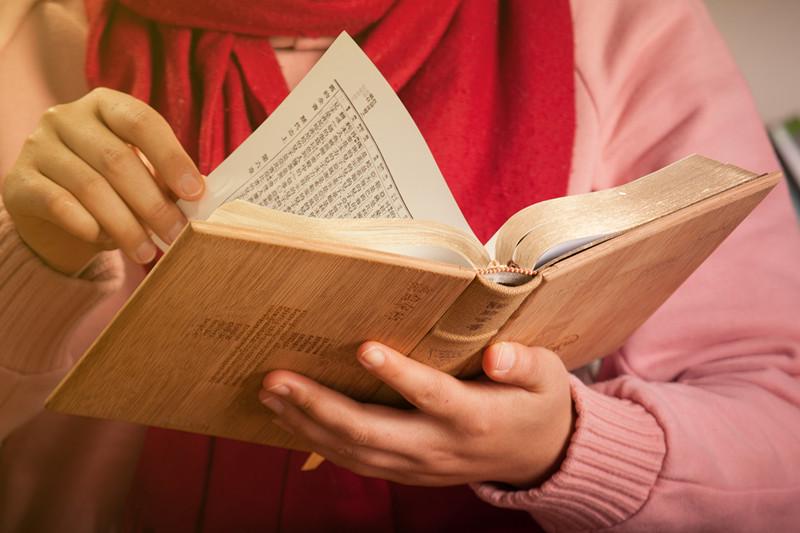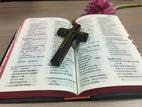Have you ever wondered why the Bible is translated into "Sheng Jing" in Chinese?
During the Tang dynasty, the word "Jing" was used to refer to Christian classics. In the early days of Chinese Bible translations, missionaries found that it was a tradition for the Chinese people to call important classics as "jing". As a result, they used the term to name significant Christian classics.
During the 17th century, Jesuit missionaries who preached in China added the word "sheng" before "jing". Eventually, the Bible was called "Sheng Jing" that suggested that the Christian classic was a "divine revelation".
The term "Sheng Jing" first appeared in the True Meaning of the Lord of Heaven written by Matteo Ricci, but it exclusively referred to the Bible. Among the names of Chinese translated Bibles, the word was first officially presented in the unpublished Poirot's Chinese Bible. Since then, "Sheng Jing" was often used to refer to the Bible.
History of Translating the Bible into Chinese
According to historical evidence, the Bible translation in China started during the Tang dynasty when Nestorianism was spread throughout the country. The earliest record of the Chinese Bible translation was the Nestorian Monument in China, founded in Xi'an in 1625.
During the Yuan dynasty, the Italian Franciscan missionary John of Montecorvino translated the Bible into the Mongolian language. However, when the Yuan Empire was replaced by the Great Ming Empire, Catholicism disappeared in the Central Plain, a part of the North China Plain.
Despite the fact that there were already a few Bible translations in Chinese in late Ming dynasty and early Qing dynasty, no complete Bible translation was released. The translation ministry was suspended due to the Chinese Rites controversy, stemming from the conflict between Christianity and traditional culture in the 17th and 18th century.
It was not until the 19th century that a breakthrough was made in the Chinese Bible translation. When Robert Morrison came to China in 1807, a new chapter of evangelism and the Chinese Bible translation was opened. The first complete Bible translation was done by Robert Morrison in 1823. One year earlier, the notable Lassar-Marshman version was published. The two translations laid a foundation for the future Bible translations and served as the blueprint.
In 1837, Archimandrite Gury's New Testament came out which was then followered by a complete version done by four individuals was published three years later. In the same year, Guo Shila revised the Gury's New Testament that became popular among the folk and was adopted by the army of the Heavenly Kingdom of Great Peace.
Later, two representative Bible translation were released and they are the Delegates Version finished by missionaries from different missions in 1854 and the Madarin Union Version published in 1919. The latter became the only version used by the Chinese church after twenty years and is the predominant translation used by Chinese Protestants.
Involvement of Chinese followers in Bible translation
Before the 19th century and in the early century, Chinese people worked as assistants of record and embellishment for foreign missionaries who were mainly responsible for the Bible translation.
Bible translation assistants:
The earliest Chinese assistants were those who worked and interacted with foreign missionaries often, like their Chinese teachers, servants and employees. They converted to Christianity and also acted as the missionaries' helpers in literature ministry.
One of those famous Chinese Christians was Cai Gao. He helped Robert Morrison print the New Testament translation in 1808. The long-period assisting work allowed Morrison to consider whether Cai could be baptized. In 1814, when conditions were ripe, he baptized Cai, who became China's first Protestant.
The second Chinese Protestant, Liang Fa, received baptism by William Milne, the second Protestant missionary sent by the London Missionary Society to China. One of his innovations in evangelism was that he distributed Christians books to students who sit in provincial and metropolitan examinations. In 1836, Liang's tract - Good Words to Admonish the Age - was influential on Hong Xiuquan, who later led the Taiping Rebellion.
Qu Ang was the third Chinese Protestant baptized by Morrison. He devoted his whole life to assisting foreign missionaries to share the gospel and print Christian books in China and Malacca. As Liang's assistant, Qu's main work in the London Missionary Society was to print Christian works and distribute gospel tracts and books with Liang.
Collaborators During Bible Translations in Chinese:
Wang Tao should be mentioned, first and foremost, as the Chinese scholar for Chinese Bible translations. In 1843, Wang was hired as the junior manager for the writing of the Delegates Version's committee consisting of British and American missionary representatives. As the one in charge of the Chinese modification, he played an essential role in polishing the Bible translation into Chinese. In the translation project, every foreign missionary translator had at least one Chinese assistant.
Calvin Wilson Mateer, the first president of the translation committee, had three Chinese assistants: Zhang Xixin, Zou Liwen, and Wang Xuanchen. Their assistance contributed much to the publication of the CUV.
Independent Bible translators
Until the early 20th century, the assisting role of Chinese people gradually turned into the leaders and presiders of Bible translations.
He Jinshan was the first Chinese person who attempted to translate the Bible on his own. Using English exegetical commentaries on Matthew and Mark as a reference, he wrote biblical commentaries on the two gospel books. The translations were published in Hong Kong.
Yan Fu, a famous translator and enlightenment thinker of modern China, pioneered in the Bible translation alone in Chinese. In 1908, George Henry Bondfield, the representative of British and Foreign Bible Society, asked Yan to translate Mark in the New Testament.
In 1922, Chinese church leaders put forward the idea that the Bible should be translated completely by Chinese people in the national Christian assembly. Wang Xuanchen took the mission. Wang, one of the translators for the Mandarin Union Version and an assistant of Calvin Wilson Mateer, had his New Testament translation released in 1933.
According to the original Greek texts of the New Testament, Zhu Baohui spent six years revising the New Testament version he cooperated with Absalom Sydenstricker earlier. In the version, he translated "God" into "Shang Di" in Chinese. In 1936, the amended version was published, thanks to the fund provided by Sydenstricker's daughter, Pearl S. Buck. It was also called the "1936 version".
In the Chinese Bible translation history, Lv Zhenzhong was the first one to translate the original text of the entire Bible into Chinese. His direct translation was faithful to the text.
(The author is a postgraduate of College of Liberal Arts, Shanghai University.)
- Translated by Karen Luo













